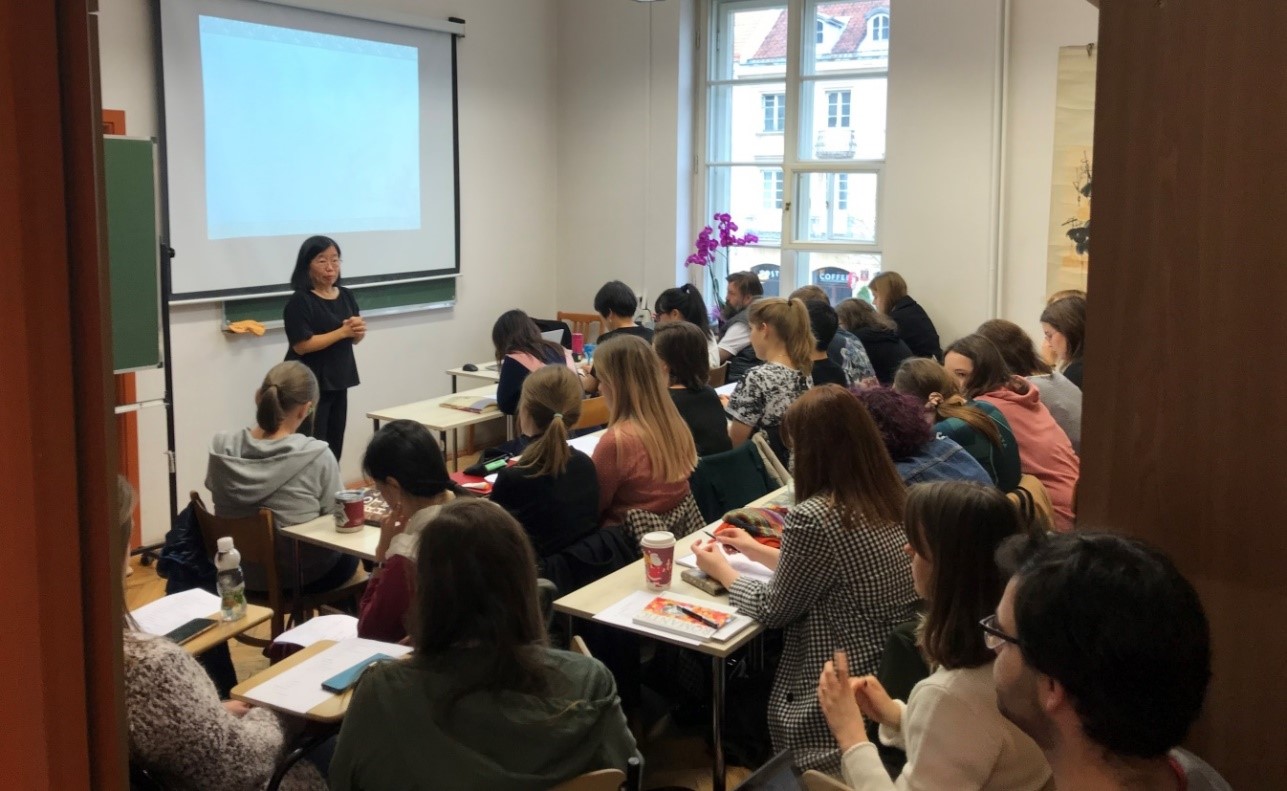Thematic Lectures on Teaching Mandarin as a Foreign Language at the University of Warsaw

Six lectures on Teaching Mandarin as a Foreign Language were held by the Department of Sinology at the University of Warsaw, with the assistance of the Education Division of the Taipei Representative Office in Poland. Dr. Chu Ching-Hua from National Taiwan University delivered lectures on the following topics: discourse of teaching; pronunciation and teaching speaking; creating and using online Mandarin courses; teaching vocabulary; grammar pedagogy; and teaching fiction.
The lectures were designed for senior students undertaking teacher training and early-career teachers of Mandarin as a Foreign Language, to give them a deeper understanding of how to teach in class, in accordance with learners’ various proficiencies.
Dr. Chu began by introducing tried-and-true approaches to conducting lessons and creating lesson plans. Then she outlined the SMART theory that she uses in her teaching: spiral path; multi-unit design; accurate semantics; reciprocal teaching; and technology tools. The “spiral path” for example, means that teachers need to link new content with prior knowledge that learners have gained in previous lessons, to enable them to accumulate vocabulary and phrases in an escalating way.
She went on to explain that the paragraphs taught in a textbook lesson are interwoven with each other and can be regarded as correlative units with different levels of importance in the context. As long as the learners have picked up terms included in some units, they will find it easier to remember what they have learned from other units in class. The SMART theory works well for dealing with diversified topics in the field of teaching Mandarin as a Foreign Language.
Dr. Chu encourages using multimedia materials for teaching Mandarin as a Foreign Language, to add variety to lessons. When asked how to select video clips of Taiwanese dramas and movies, she advised selecting something with a well-plotted storyline and vivid characters that will fascinate learners and also provide them with real-life language input. She suggested “The Way We Were” 16個夏天—also known as “16 Summers”—as an example. Each of the lectures received a warm response and prompted a lot of discussion afterwards among participants.
